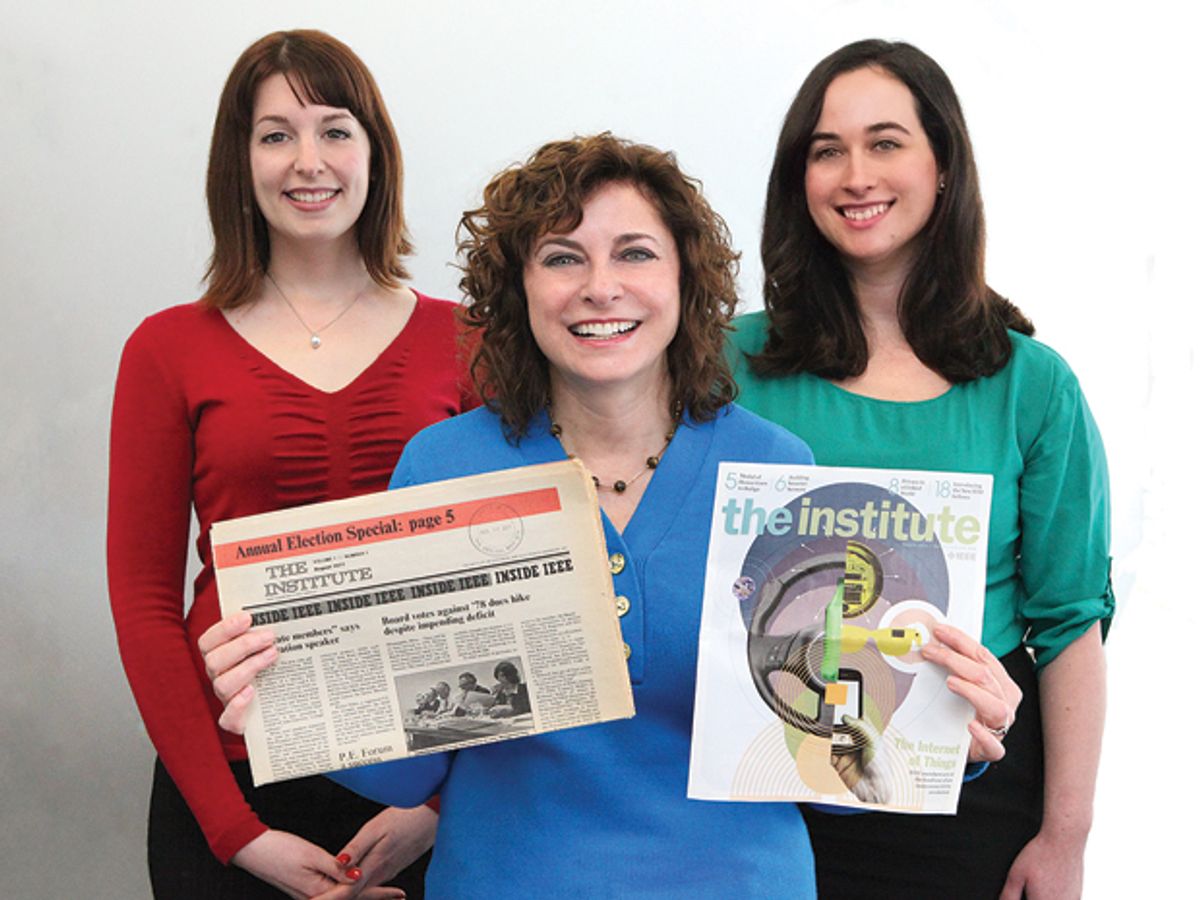Editor's note: In this 50th anniversary year of IEEE Spectrum, we are using each month's Spectral Lines column to recount some pivotal moments of the magazine's history. Here we describe the origins of Spectrum's companion publication of IEEE news, The Institute.
To thrive, a magazine has to publish articles of intense interest to its readers. The alternative is irrelevance, followed by extinction. But is there anything else a magazine should do?
Well, if you're talking about a magazine published by an association, you might reasonably expect it to dispense news about the association—important decisions by its governing boards, election results, recent achievements of its high-flying members, a calendar of upcoming conferences, perhaps a column written by its top officer.
And so it was with IEEE Spectrum, from its very first issue in January 1964. A column called “News of the IEEE" (and later “Inside IEEE") dispensed just such information. But the two missions never coexisted comfortably. Spectrum was never a typical association magazine. To begin with, it competed for advertising with several hard-charging commercial magazines with big staffs, international bureaus, and powerful publishers. And for most advertisers, an association publication isn't the first choice to get their message across.
So when Spectrum's new editor, Donald Christiansen, came on board in 1972, he found it awkward to have IEEE's flagship magazine trying to serve two masters: those who wanted to read about technology and those who were interested in how the society was being governed.
“Ideally, those two should not be attempted in a single publication," he says. “First, it discourages advertising. Second, the governance issues are of little or no interest to a significant number of readers, and of course, of great importance to others."
It took Christiansen a few years to convince IEEE's Board of Directors that a separate publication was needed. He gained some traction from developments within IEEE. In 1972, IEEE members voted to change the organization's constitution to broaden the scope from that of a strictly technical society to one involved in professional issues as well. Back then those topics included wage busting, unionizing, licensing, and working conditions.
The question was, how should Spectrumcover such topics? “Because of the controversial nature of professional issues at the time, many of us feared that including such material within the covers of Spectrumwould have a significantly adverse effect on advertising revenue," wrote Jerome J. Suran, an IEEE officer who would become the organization's president in 1979. That comment is an excerpt from a letter Suran wrote in 1985.
In the letter, Suran went on to describe major debates within the IEEE Publication Services and Products Board and the IEEE Board of Directors about the new publication's mission. Eventually, the boards approved Christiansen's and Suran's plan to spin off a newspaper to cover professional and IEEE news. The boards also resolved to give the editorial staff the responsibility to report independently on professional issues in a balanced and timely way, and to reserve space in the new publication for IEEE leaders to communicate their views and decisions to the members.
Christiansen, with support from Suran, took steps to launch the separate publication. In December 1976 a four-page insert called The Institute was introduced. It included two subsections: “Inside IEEE" and “IEEE People." It was printed on heavier paper thanSpectrum, signaling to members that changes were afoot. In April 1977, the IEEE Board of Directors finally passed a motion that The Institute“be published separately for six months, beginning in July 1977 as a non-archival, fast-reading and fast-responding newspaper at a regular frequency."
Expecting to get a new publication off the ground in three months proved to be overly ambitious. An extra month was needed. Under its first editor, Ellis Rubinstein, the inaugural issue was published in August 1977. It carried the tagline “A news supplement to IEEE Spectrum" and was mailed only to members in North America. It was published as a monthly in 1978 and was eventually mailed to all members worldwide.
It stayed a monthly until 2003, when for budgetary reasons the IEEE Board of Directors reduced the number of print issues to four per year. At the same time, though, the publication's online presence was expanded. A bimonthly electronic newsletter, The Institute Alert, was also launched; it is sent to all members who have shared an e-mail address, giving them a quick summary of the latest online coverage.
Over the past decade The Institute has expanded into a set of multimedia outlets that include videos, blogs, social media sites, a PDF digital edition for computers or mobile devices, and a mobile edition for smartphones and tablets.
Visionary though he was, Suran didn't foresee that splendid evolution. But he did predict that we would stumble occasionally. “At times the editorial staff will err, either by a bad judgment call or by excessive zeal in responding to the initial charge of the Board that they try to stir reader interest," wrote Suran in that 1985 letter.
As the longest-serving editor of The Institute, I have indeed made a few calls I regret. But my staff and I are committed to stirring reader interest by constantly looking for new ways to showcase IEEE and the work of its members.
This article originally appeared in print as “The Birth of The Institute."
